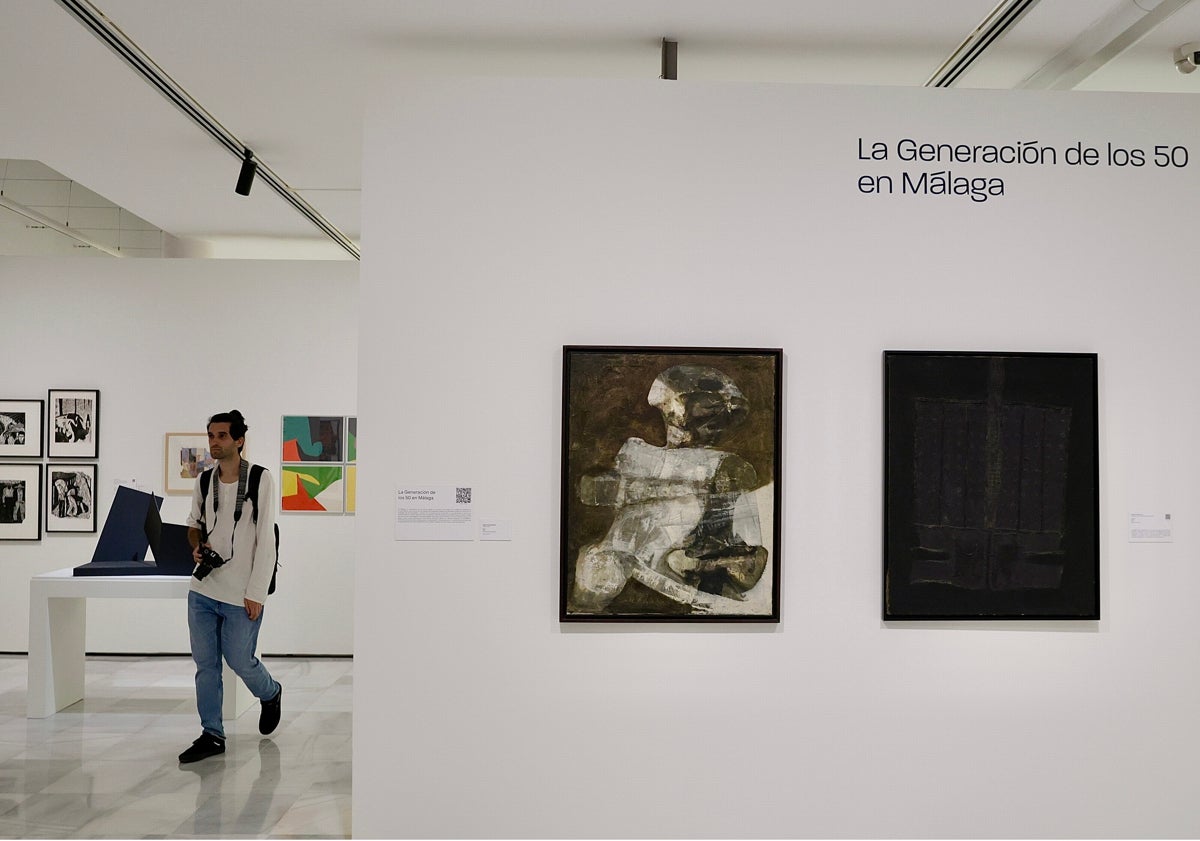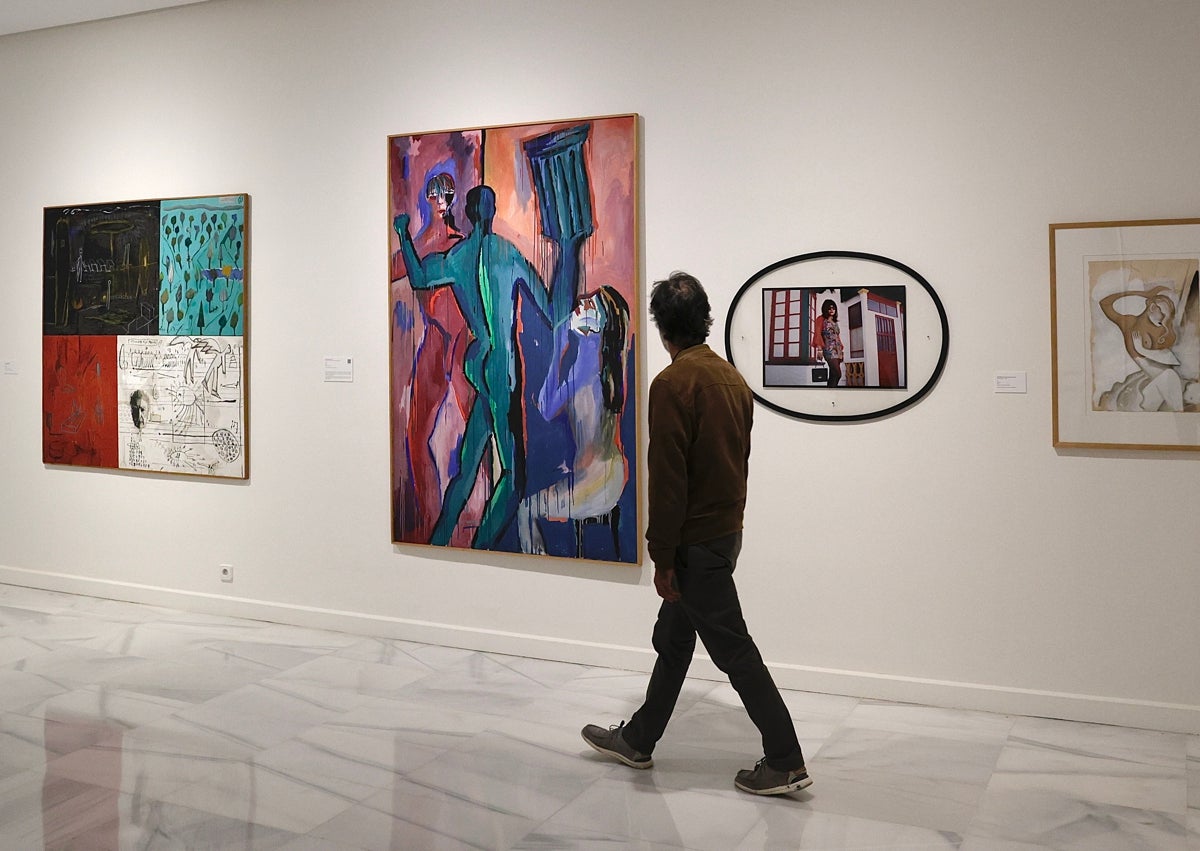Mucac confirms the importance of contemporary art from Malaga in its debut exhibition at La Coracha
The new museum opens with a reinterpretation of the city's heritage through pieces by local artists such as Moreno Villa, Brinkmann, Pepa Caballero, Barbadillo, Colectivo Palmo and the art collective of Agustín Pareja School
Those writing about art history usually regard Malaga as being always on the outside looking in, never at the heart of the cultural action. Not so. Mucac La Coracha makes its debut on the contemporary art circuit by aiming to dismantle this belief with a reinterpretation of what the city's artistic heritage has to offer. This building, the old Mupam municipal heritage museum on Paseo de Reding, has no external signage yet, but "it will come", they say. Its conversion into one of the two venues making up the new municipal museum is based on these objectives: a showcase for Malaga's creative output and a place committed to the objectives of sustainable development. The second venue, the former CAC, now called Mayoristas, will re-open in mid-2026.

The heart of this museum is what occupies the two central floors now called Espacio Uno and Espacio Dos. These two spaces are filled with the city council's art collection: many purchased from the former CAC and some more recent purchases with this project in mind, donations from bequests (especially the huge bequest from Mingorance's estate) and pieces on loan (Carmen Riera as one such benefactor). The exhibition, entitled Ayer. Colección 1940-1990, brings together 123 pieces by some 70 artists, nearly half from Malaga, endeavouring to show that creative output in Malaga "keeps pace with international creative output, always influenced by the social context", says Salvador Nadales, exhibition curator and advisor to Mariana Pineda's municipal culture team.
As such, this first exhibition aims to rewrite Malaga and Andalucía's place in art history. 'El canto de los muertos', a Picasso collaboration with poet Pierre Reverdy, opens the tour through eight sections marked out by the most recent pieces. The section on Exile and Surrealism includes a very recent municipal acquisition, an interesting take on José Moreno Villa's Three Black Graces, together with a rare item on loan from this Malaga-born artist's estate: a graphumo on paper, an art technique of his own invention. There is a piece from Luis Fernández's Picasso period and a real seafaring one by José Caballero, reminding us of fellow artists in exile like Alberti.

The arrival of Franco's regime erased the avant-garde and imposed an academic realism that exalted traditional values, here represented by paintings by Félix Revello de Toro and Manuel Mingorance. Next up is the first female artist present in this exhibition, Carmen Laffón. Her simple still life displays "a silent resistance to the socio-political context of the moment." There is no parity possible here as history made female artists invisible, yet there is clear intent to give them their space throughout this exhibition. Pepa Caballero's work is very prominent and the final section is named New Feminist Languages and Practices, featuring Marisa González and Paloma Navares, among others.
The section on The '50s generation in Malaga does not represent a single-minded group of artists, but rather several individuals breaking with tradition to restore the avant-garde. This movement emerged with the Peña Montmartre, the group of young artists from Malaga who travelled to visit Picasso in Cannes to later become the Picasso Group. Names such as Enrique Brinckmann, Stefan Von Reiswitz, Manuel Barbadillo and Gabriel Alberca.

From the 1950s onwards, the break with traditional art formed two main lines of rebellion: informalism and geometric abstraction. "This is happening in Spain, but it is also happening in Malaga," says Nadales. Representing informalism are works by such as Pepa Caballero (including a new acquisition), Miguel Berrocal (a sculpture on loan) and a Tàpies on loan from the Carmen Riera collection. For the latter movement, Jorge Lindell, Pepe Bornoy and Manuel Barbadillo stand out. In this room, attention focuses on a sculpture group by Lugán acquired by the CAC and never before exhibited.
At the top of the stairs, the MUCAC reserves a space for the Palmo Collective, exhibiting one of its most iconic portfolios of graphic art, 'Cantos de Al Ándalus' (1981), next to a striking painting with sculptural touches by Stefan von Reiswitz. The 1980s were the years of the counterculture, of an art linked to urban subcultures and committed to its time. Malaga's college of architects plays an essential role here, lending pieces by the Agustín Pareja School collective and Joaquín de Molina that demonstrate their irreverent and innovative spirit. They stand alongside powerful pieces from the Carmen Riera collection, like Miquel Barceló's Goat 1 and Juan Muñoz's Seven figures on the balcony.
MUCAC is committed to ecology in all its exhibitions. Part of the ground floor (Espacio Cero), curated by Marta del Corral, will be dedicated to 'sustainable Malaga', the first showing, entitled The Weight of Fragility, is by French artist Françoise Vanneraud.

The top floor offers an immersive experience into the vastness of the municipal collection under the umbrella of Nature in Resistance. Some 90 pieces from different periods and styles are on show here, designed for impact and totally random. There is a succession of landscapes, sea views, birds and countryside by classical artists like Carlos de Haes and Verdugo Landi, very contemporary artists like Cristina Iglesias, Evaristo Guerra, Laura Brinkmann and Juan del Junco, and international names such as Marina Abramovic and Louise Bourgeois. A small sample of Malaga's artistic heritage yet to be shown.

